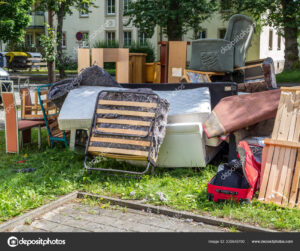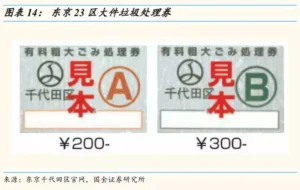
There are ways process for disposing of large garbage in Japan. In other words, you can’t just throw it away like regular trash or put it outside from your house. These large trash cans are called Sodai Gomi. Hmmm, what is Sodai Gomi? Below, StuDrill will discuss the meaning, types of goods, and the process of disposing of Sodai Gomi in Japan. Check it out!
What is Sodai Gomi?
Sodai Gomi (粗大ゴミ), literally means big garbage, is any large waste or garbage (excluded electronic items) that need to be going through a specific process in order to be disposed. Moreover, Sodai Gomi can be defined differently according to the regulations in the area you live in. So, you should know and follow similar rules based on your region.
One of the rules you must know is any items exceed 30 cm in width, height, or depth considered as Sodai Gomi, such as:
- Furniture
- Bedding
- Bicycles
- Appliances (electric, gas, oil)
According to Japanese Home Appliance Recycling Law, household appliances must generally be disposed of at the original manufacturer to avoid any harmful substances remaining in them. So, this kind of waste also needs to be recycled because the materials can be recycled. So, are you curious about how the process of Sodai Gomi works? Let’s see the explanation!
The Ways to Disposing Large Garbage in Japan
Ways to disposing large garbage in Japan can’t just be thrown away like normal waste collection. The initial process is carried out with a pickup that must be scheduled outside of the trash collection day. Apart from that, there are also costs that must be paid. So, here is the step by step process:
- Make an appointment either via telephone or municipality’s website, such as in Gifu City for your pick up time and collection point
- The staff will inform the seals that you should acquire according to items you will dispose of. This can be purchased from a local convenience store. In Tokyo you’ll find two primary seal or sticker categories, labeled as “A” and “B.”
- Attach the sticker to your items along with your name or registration number. On the scheduled day, you can drop your garbage at the collection point.

An “A” sticker is priced at 200 yen, while a “B” sticker costs 300. The quantity of stickers you’ll have to purchase depends on your items and this can vary. A microwave might require 300 yen, while larger furniture could be up to 2000 yen worth of stickers.
There’s More Ways You Must Know!
- Going through the common way in your local municipality can be confusing as it is conducted entirely in Japanese. To solve this, you can use agencies like Nishida Service.
- For your information, most of the electronic items such as refrigerator, washing machine, PCs, etc are not included in Sodai Gomi and cannot be attached by Sodai Gomi stickers.
- It needs to go through a different process like recycling instead of disposing of them to preserve the environment. Therefore, the method is to be collected or removed by a recycle shop, electronic appliance shop or an agency service.
- If the items that you need to dispose of are still in good condition, it’s recommended that you donate or even sell the items in second-hand shops, such as BOOKOFF (the most popular way to earn cash from trading your items).
Conclusion
The process of Sodai Gomi is mandatory and should be followed by everyone living in Japan when you need to remove a large amount of garbage. This is done to help preserve Japan clear of large trash pollution. However, the process can be a bit confusing for some. But, don’t worry! because there are alternatives like selling Sodai Gomi through recycle shops or second-hand shops.
You may need to improve your Japanese as many of the municipality websites use Japanese in their interface and the process is primarily also in Japanese. Luckily, StuDrill is here to help you with it’s personalized AI (Artificial Intelligence), not only improving your understanding but also your speaking skills. So, coming soon this autumn!
Editor : Zakiah Machfir









